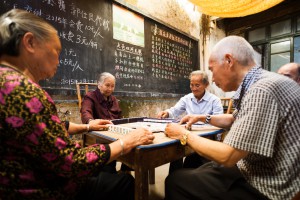By Cutright Elizabeth on March 15, 2016 in News
In the U.S., the impending wave of aging baby boomers has sparked a cultur al shift in senior living industry, inspiring thousands of new projects and products.
al shift in senior living industry, inspiring thousands of new projects and products.
But what about the rest of the world?
According to United Nations Population Fund (UNFPA) report Aging in the 21st Century, “the population of people over 60 will reach 1 billion within the decade.”
Even more eye-popping, 80% of the world’s seniors will live in developing countries.
As the UNFPA explains, “While the trend of aging societies is a cause for celebration, it also presents huge challenges as it requires completely new approaches to health care, retirement, living arrangements and intergenerational relations.”
“People everywhere must age with dignity and security.”
Exporting Strategies
Stateside, senior living providers have already begun to plan for the impact of millions of seniors by offering new alternatives and greater options in an effort to woo future residents. However, even more tantalizing than the millions of U.S. senior citizens poised to enter retirement are the hundreds of millions of Chinese and Indian citizens who will soon turn 65.
As Forbes contributor Benjamin Shobert points out in a recent piece for the New York Times, U.S. senior living providers are perfectly positioned to capitalize on the rise of the international senior population.
“With the realization that we are all living longer in mind, now is the time for American and European senior living companies to begin laying the groundwork for the globalization of senior living.”
Looking East
For Shobert, China and India top the list of potential markets ripe for western-style senior living offerings.
By 2050, the number of Chinese citizens over 65 years in age will number well above the entire U.S. population. In consideration of this expected demographic explosion, U.S. senior care companies have begun to work with Chinese partners to develop Continuing Care Retirement Communities (CCRC). For companies like Merrill Gardens, CCRCs are an ideal way to establish a foothold in the Chinese market, where an expanding middle class is fueling demand.
While both India and China should see their aging population expand to over 300 million in the next 20-30 years, India may perhaps provide the juicier prospect. In contrast to China’s more industrial and production-focused economy, India’s consumers are likelier to embrace senior living services because much of India’s financial success has taken place in the service industry. Additionally, India has a well-established, for-profit healthcare system well trusted by the general population. Finally, India’s healthcare organization is not as tightly regulated China, providing more flexibility on the types of senior care possible.
In addition to China and India, Shobert acknowledges lots of potential in Hong Kong and Singapore. Both countries already support comparatively modern healthcare systems – especially in relation to regional equivalents – and both have an established middle classes able to absorb the costs associated with providing continued care to their aging population. Additional markets to keep an eye on include Brazil, Malaysia, Thailand, and the Philippines.
New Skill Sets
While there may be plenty of opportunity to export U.S. senior living to developing markets, caution and knowledge aforethought is always advisable. U.S. companies will need to evaluate whether a potential foreign market has the adequate infrastructure to support a senior living industry. That means a well-established insurance framework along with sufficient economic demographics – that every-so-important middle class, along with public or private pensions and available government funding or incentives – to justify spreading out into these markets.
When it comes to developing ROI expectations, Shobert cautions companies to look beyond the short-term. Initial struggles should be anticipated and planned for, advises Shobert, and any company considering an international expansion of their portfolio should be honest about their risk tolerance.
Overall, Shobert believes Western companies should act fast when it comes to seizing the opportunities presented by overseas markets.
“The globalization of senior living is just beginning, and Western senior care companies need to begin taking the opportunities to identify and scale internationally more seriously than they ever have.
“Domestic competitors are closely watching how the industry is emerging in China and India, with an eye to ultimately create their own brands that if successful will limit the upside potential for western companies that come to terms with the global growth opportunity too late.”


